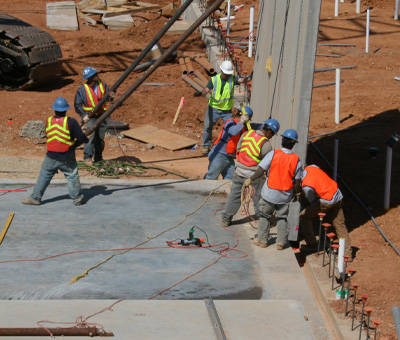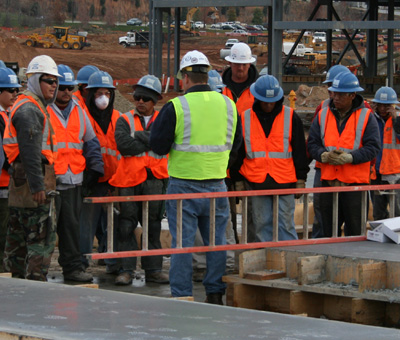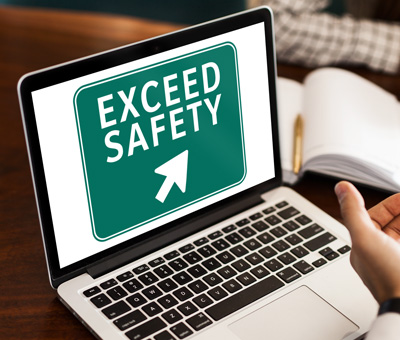Construction is a dangerous business. Risks are constant, standards shift, and complacency can be deadly. For Jennifer Lastra, a U.S. Navy veteran and current CEO of 360 Immersive, corporate-style training falls far short. True safety begins with continuous improvement, supported by real engagement on the job.
Training Should Go Beyond a Click-Through Box
“Corporate training has traditionally been delivered online as a compliance requirement. You don’t really have a choice; it has to be done, and it usually ends up being one of the last things on the to-do list. For most appliance-based training, it’s just a click-through, boring, and ineffective on so many levels.”
Jennifer challenges the assumption that time spent equals proficiency. “A lot of training is built around seat time, like saying one hour of training means a person has achieved a certain level of competency, which is completely illogical.”
Even newer micro-learning trends can fall short. “Some say, ‘You only need three minutes of training,’ but that’s often not enough to be effective. The focus can’t be just on checking a box quickly. It has to actually teach something meaningful.”
Make Training Specific, Brief, and Timely
Jennifer advocates for delivering training right when it’s needed most: on the job, in the context of real work. “If we’re about to work with a new piece of heavy equipment around a trench, let’s have a quick safety talk right then. Finding training solutions that fit into the moment of work is brilliant. It’s timely, and it’s incredibly important.”
These brief, focused sessions, whether toolbox talks or stand-downs, keep safety top of mind and directly tied to the work employees are doing.
Prioritize Retention and Real Competence
“Traditional training often fails to truly assess whether someone has learned the material. In e-learning, it’s usually about memorizing facts for a test, passing it, and moving on. But that doesn’t necessarily mean any real knowledge has been transferred.”
Jennifer stresses the importance of measuring success by what happens after the training. “Are behaviors changing? Are people more engaged? Are they talking about what they’ve learned? That’s when you know the training is actually making an impact, when they’re practicing the skills and applying them on the job.”
Short Sessions Beat Annual Refreshers
Annual training requirements create unnecessary frustration for both employees and trainers. “Annual refreshers are a nightmare because they’re time-consuming and everyone dreads them. Even the best trainers struggle when faced with a room full of people who don’t want to be there.”
Instead, she recommends breaking training into smaller, more frequent sessions. “When a new piece of equipment arrives, or someone new joins the crew, or when there’s been a near miss, that’s when training should happen. Make it intentional, make it deliberate, and make it relevant to what’s actually happening on the job site.”
By delivering “golden nuggets” of knowledge during daily check-ins or toolbox talks, companies can build a stronger, more engaged safety culture.
Real-Life Examples that Stick
Jennifer believes that training sticks when it’s connected to real-world situations. “I used to work in the night vision industry where gamification was popular, but a lot of that training lacked opportunities for learners to explore and apply the information. You’d see flashy avatars, but they didn’t relate to daily operations.”
She recalls one personal example that made a lasting impression. “During counter-terrorism training, I learned never to get a hotel room above the fourth floor when traveling overseas. That simple, surprising fact stuck with me. Even today, I still try to stay below the fourth floor when I travel.”
The key, she explains, is making training relevant, memorable, and directly applicable to real situations.
Provide Empathy
Jennifer’s early experience integrating ship crews in the Navy shaped her perspective on psychological safety. “I physically felt unsafe. I didn’t feel cared for, valued, supported, or heard. When I arrived, everyone was staring at me because they didn’t want me there.”
That experience taught her the importance of fostering inclusive, supportive environments where people feel safe to be themselves. “You don’t need to pretend to be someone else. Curiosity is a much better approach than feeling defensive or challenged. When leaders model authenticity and empathy, it opens the door for real learning and engagement.”
Blended Learning for the Whole Team
Effective safety training must consider the diverse backgrounds and learning styles of workers. “Many workers may be non-native English speakers or reading at a sixth- to eighth-grade level. Blended learning is so important. Some people learn best visually, others by doing. When they can see it, do it, and apply it, that’s when real knowledge transfer happens.”
On-the-job training remains critical. “That’s why pairing a new employee with a ten-year veteran is so valuable. The veteran can explain not just how to do something, but why. Until workers have those ‘aha’ moments through experience, retention and engagement won’t happen.”
She also sees great potential in tools like VR. “You can simulate a trench collapse and create that learning experience in a safe environment. It helps workers understand situations they might not otherwise encounter and prepares them to handle them in real life.”
Making Safety Personal
Ultimately, Jennifer believes safety has to be personal. “Safety isn’t just a box to check. It’s about people first. When you take care of your people, they take care of your business.”
Continuous improvement isn’t a one-time event. It is a steady process built on daily conversations, small actions, and a genuine commitment to each person’s well-being. When done right, it creates a culture where employees own safety because they want to, not because they’re forced to.
Don’t wait for accidents, audits, or annual deadlines to drive your safety program. Use Jennifer’s insights to build a system that:
- Delivers small, timely training when it matters most
- Focuses on true retention and behavior change
- Encourages authentic conversations and psychological safety
- Adapts to real-world jobs and diverse learning needs
This is how safety becomes second nature, woven into every task, every day.








